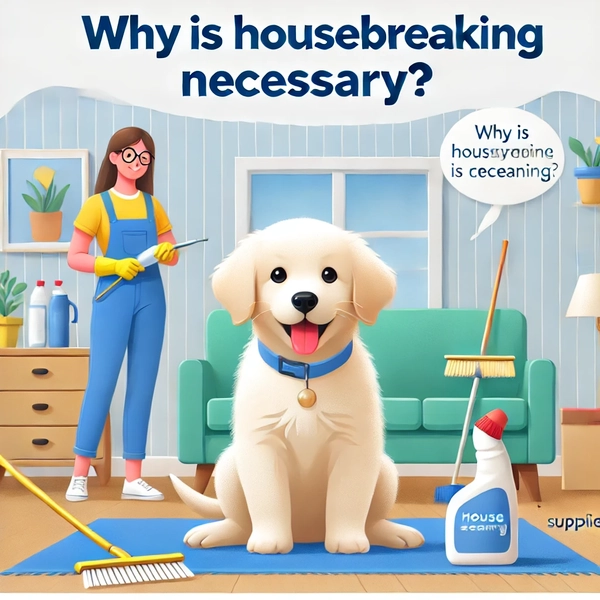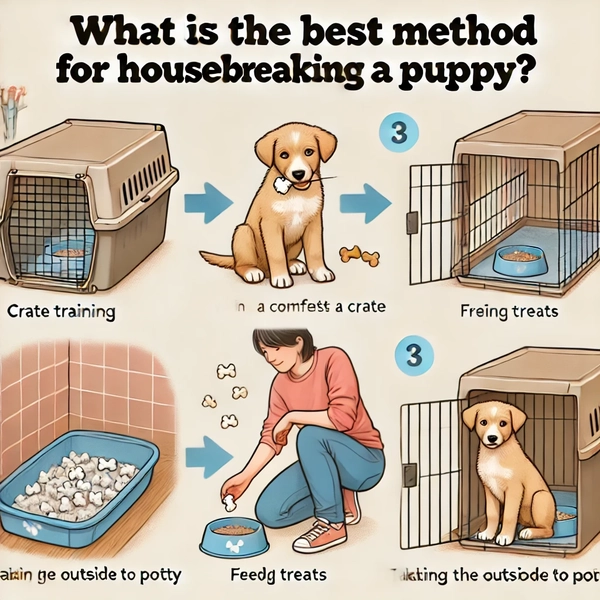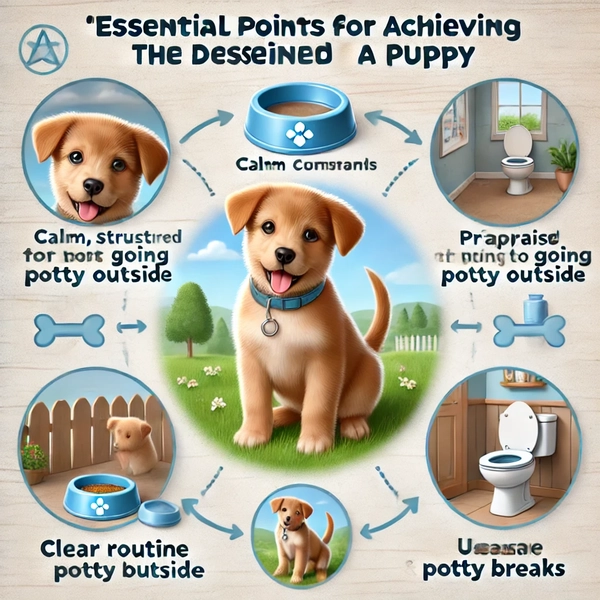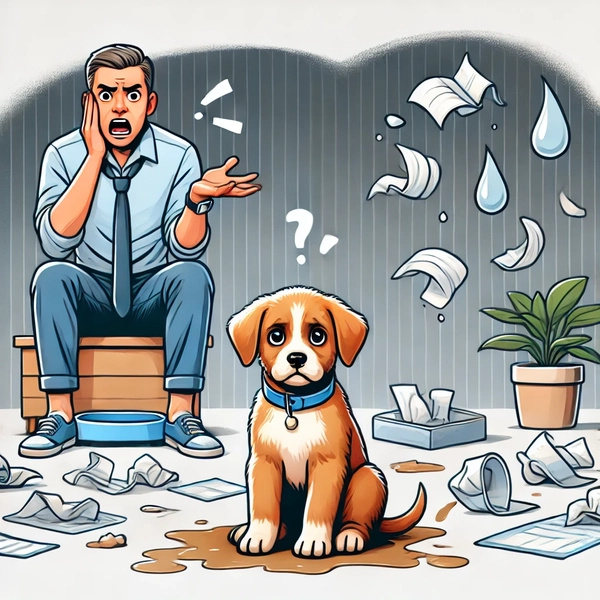What is the best method for housebreaking a puppy? – A new puppy is a definite plus to the family! As adorable puppies demand attention and plenty of games to be played, most dog owners face one challenge: Housebreaking. Whether you are an inexperienced dog parent interested in completing this task, worry not. This article is here to help, and we have outlined the proven ways of getting your puppy trained in record time! Let’s make this a positive experience for you and your puppy.
Why Is Housebreaking Necessary?

Housebreaking, commonly known as potty training, is perhaps the best command to master in making your puppy obedient.
It not only maintains the cleanliness of your house but also teaches the puppy self-discipline. If you do things right, the puppy will cause no trouble once the owner is away, as it will have established good practices that come with that particular environment.
What Is the Best Method for Housebreaking a Puppy?

Newfound power challenges are easily solved by following these methods of housebreaking a puppy:
1. The Crate Training Method
Crate training is arguably the most common method dog owners have used for house training a puppy. The crate serves as a safe environment for the young one. Since puppies instinctively do not soil whatever part of their sleeping ground they are in, they learn to control their bowel movements when they are in the crate.
How to Crate Train Your Puppy
Choosing the Crate Size for Your Puppy—The crate should not be too small, such that the puppy is unable to stand, turn, or lie down comfortably. On the other hand, she should not get a crate that is way too large, as the puppy will pot in one corner and sleep in another.
- Hypothesis Chaining: An effective method for creating associative connections: Put some soft hiding and bring some ‘chewable’ on board… To instill ‘the right behavioral orientation,’ one can also use treats and feed puppies inside the crate. Transform it into a joyful space.
- Khaleesi, it is time to establish your discipline. Setting up a schedule for your pet is equally important. First thing when you wake up, and after each and every meal, before going to sleep, take your puppy outside to relieve himself. On average, puppies need to go potty once every 2 to 3 hours.
- She is patient. It takes patience to induce your puppy to accept the crate. Suppose your puppy makes a mess while in the crate; do not get angry at the pup. Just clean the area and work on the training.
Repeat this several times. Puppies up to six months of age should be kept in a crate for a maximum of a few hours.
2. The Scheduled Method of Training
This method suits you as an in-house puppy caretaker or anyone who can access their dog throughout the day. It’s all about following a rigid timetable and ensuring your puppy goes outdoors at specific intervals.
How to Schedule Train Your Puppy
- Feed the Puppy on a Timely Basis: After eating and drinking, the puppy will want to go potty after a few minutes. Ensure feeding is always at the same time as your puppy outside after meals.
- Pay Attention to Signals: Puppies tend to be alert when they want to go. They can do that by sniffing the floor, pacing, running around, or simply looking anxious. The moment you notice such behavior, take them outside without hesitation.
- After Every Relief Encourage Him: Every time your puppy goes potty outside, reward and shower him with warmth. Everyone knows how puppies respond to such sanctions!
- Accidents Happen: Prepare for this crisis, knowing it happens sometimes. What you do in the case of any accidents occurring indoors should be done immediately with the aid of an enclosed cleaner.
3. The Paper Training Method
In this approach, you must train your puppy to relieve himself in a particular place inside the house, like pee pads or newspapers. This is a good option for people who live in skyscrapers and have no time to take the puppy out every hour.
How to Paper Train Your Puppy
Decide the Place Of Toileting: You should identify an appropriate place within a house where the puppy can relieve itself. Place either newspaper or pee pads where the ‘potty spot’ is.
- Incorporate a Command: When you take your puppy to the pad, say a word or phrase like ‘Go potty’ so that they will connect that place with the act.
- Reward After Success: The moment the puppy steps on the pad, praise the dog and give it a treat. This approach should be used every time.
- Slowly Transition to the Outdoors: If you prefer taking the dog outside, how about carrying the pad nearer the door and then outside?
4. Technique of Positive Reinforcement
Positive reinforcement in training improves dogs’ behavior. For instance, if you praise your puppy for going to the right place every time, you will soon encourage this behavior.
How the behavior changes can be directed through positive reinforcement
- Praise Immediately: If the puppy goes outside, reward it or say “Good tack!” to the dog. A puppy may not get the cause and effect if you after so long.
- Devise a Potty Phrase: Repeating the exact phrase, such as “Go potty,” assists in teaching the puppy the actions required.
- Be Consistent. Good behavior is rewarded, while there are no negative consequences for soiling indoors. If your puppy has an accident, there is no fuss; just clean it up afterward.
Tip: Thin and soft small treats will serve the purpose the best because they can be offered immediately after the puppy finishes his toilet business.
Essential Points For Achieving The Desired Results

In any housebreaking system, these are the essential recommendations that should be observed to achieve success.
Being Followed Provides Structure
Dogs do well with structure in their lives. So whether it is crate training, schedule training, or paper training, I believe remaining the same will assist in understanding what is expected of the puppy. Feeding and potty times should stay the same every day.
Use The Same Commands
Potty training commands should be consistent so that the pup does not get confused about what is expected of him/her. Sounds such as “Go potty” or “Do your business” will help send the message to the puppy.
Exercise Patience
One factor that one needs to know is that patience is a necessity when it comes to puppies. There are going to be messes, and that is fine. Don’t let it get to you; just keep in mind that your puppy is also an infant in training. Like small children, pets are not very quick on the uptake.
Potential Mistakes that Could Hinder a Process of Housebreaking

Even if it is not their intention, pet owners face difficulty when it comes to caring for a puppy. Take note of the following lapses that should be avoided during the house training, especially for a young puppy.
1. Fluctuating Training
Training your puppy with one method for a couple of days and then switching to another will not help your puppy become better trained faster. Find a program—this means one program—and use it consistently!
2. Consequences Masking The Role Of Accidents
Scolding a puppy for making messes will only make the puppy afraid and anxious. It is better to let it go, clean its place, and try to avert accidents by looking out for the puppy’s wee bodily cues.
3. Overstaying the Duration of Leaving the Puppy Alone at Home
Most puppies are still immature and have weak bladders, so they cannot be expected to be left without taking out for a potty break for long. If you must stay away for long, consider getting a dog walker or requesting assistance from a friendly neighbor.
How Long Does It Take to Potty-Train a Puppy?
It can generally take a few days to a couple of months. The key is patience and consistency!
How to Manage Incidents
Accidents are also likely to occur, especially when training your puppy to eliminate reliably. Here is how to deal with them so that there isn’t any regression in progress:
1. Breathe In & Out
When you observe an accident, don’t panic or scream. The young one does these petty things unconsciously and is not purposely doing these to irritate you.
2. Make Use of the Right Mechanism to Clean the Mess
Make use of enzyme-based cleaners to eliminate the entire smell. Dogs tend to revisit and re-soil areas they have previously eliminated, so it is necessary to eliminate such odors.
3. Take Care to Understand the Rationale behind Its Occurrence
Every event we may term as an accident becomes a valuable tool for us to learn. Suppose your puppy has a potty accident indoors; what could you do better in the next episode? Taking him out more frequently or paying more attention to his potty cues is best.
FAQS
- How frequently do I need to go outside with my puppy? You are expected to take your puppy outside every two to three hours and once after meals, naps, and playing.
- Is it considered inhumane to train a dog in a crate? Crate training is not cruel when done correctly. It is meant to assist in house training by giving a dog a confined space.
- What if my puppy does not stop barking while in the crate? It is natural for young dogs to bark in a crate for the first time. Ensure they are relaxed and do not stay inside for prolonged periods.
- Can I teach my puppy to go through a pet door? Certainly! As soon as your puppy becomes a bit more acclimated to the potty training schedule, a doggie door can be introduced for added convenience.
- What’s the earliest I can and should be house training? The youngest effective age of the puppy possible for house training is around eight weeks old.
- Do I need to provide water to my puppy before sleeping? Consider restricting the amount of water children take to bed a few hours earlier to minimize the probability of them wetting the bed.
- What should I do if my puppy goes backward in training? Regression is standard to expect even more when there is pressure or a particular change. Simply revert to the beginning stages, and the pup will likely keep up.
Every pet parent always believes that housebreaking a puppy is an uphill task. However, the good news is that this process will sail through if done appropriately. Each puppy has its characteristics, and for that matter, they will reach certain milestones at different times.
The best training is simply the one that is effective for you and your puppy. The three elements of consistency, patience, and positive reinforcement are critical to crate training, schedule training, or pee pads.